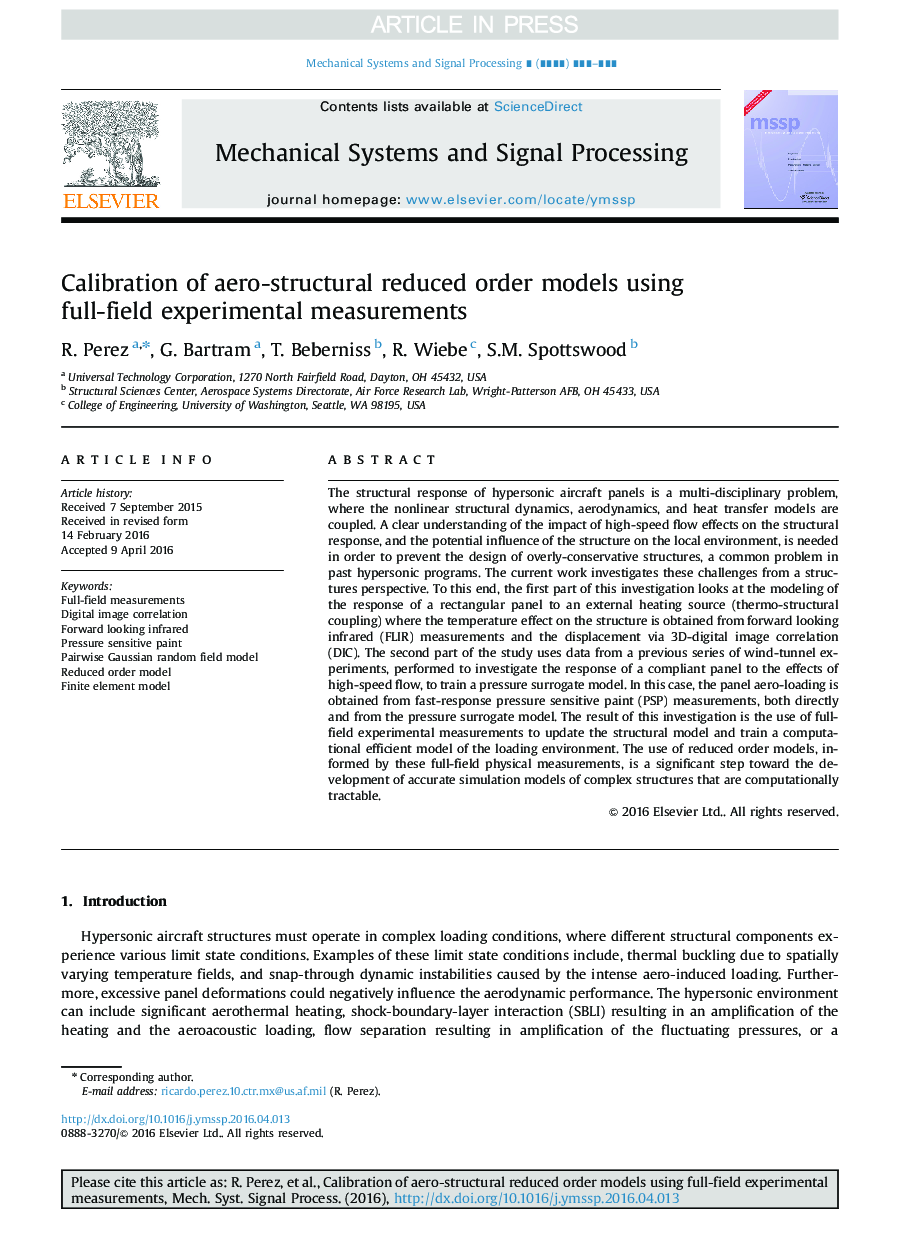| Article ID | Journal | Published Year | Pages | File Type |
|---|---|---|---|---|
| 4977182 | Mechanical Systems and Signal Processing | 2017 | 17 Pages |
Abstract
The structural response of hypersonic aircraft panels is a multi-disciplinary problem, where the nonlinear structural dynamics, aerodynamics, and heat transfer models are coupled. A clear understanding of the impact of high-speed flow effects on the structural response, and the potential influence of the structure on the local environment, is needed in order to prevent the design of overly-conservative structures, a common problem in past hypersonic programs. The current work investigates these challenges from a structures perspective. To this end, the first part of this investigation looks at the modeling of the response of a rectangular panel to an external heating source (thermo-structural coupling) where the temperature effect on the structure is obtained from forward looking infrared (FLIR) measurements and the displacement via 3D-digital image correlation (DIC). The second part of the study uses data from a previous series of wind-tunnel experiments, performed to investigate the response of a compliant panel to the effects of high-speed flow, to train a pressure surrogate model. In this case, the panel aero-loading is obtained from fast-response pressure sensitive paint (PSP) measurements, both directly and from the pressure surrogate model. The result of this investigation is the use of full-field experimental measurements to update the structural model and train a computational efficient model of the loading environment. The use of reduced order models, informed by these full-field physical measurements, is a significant step toward the development of accurate simulation models of complex structures that are computationally tractable.
Keywords
Related Topics
Physical Sciences and Engineering
Computer Science
Signal Processing
Authors
R. Perez, G. Bartram, T. Beberniss, R. Wiebe, S.M. Spottswood,
